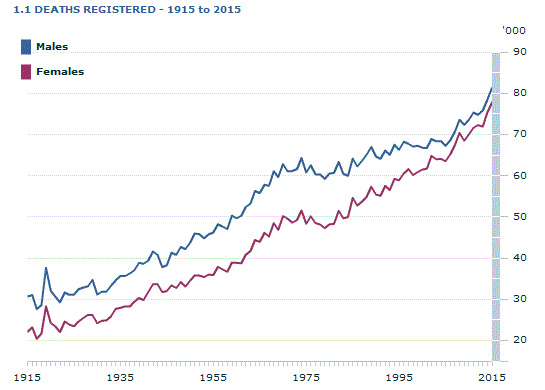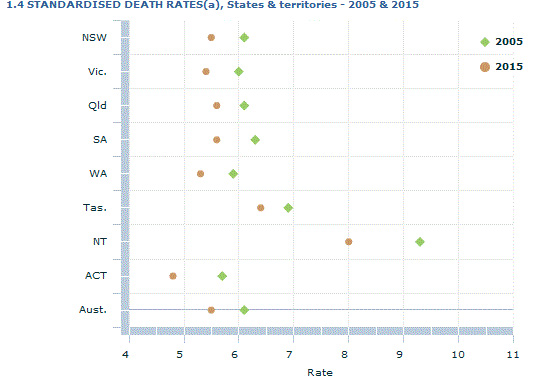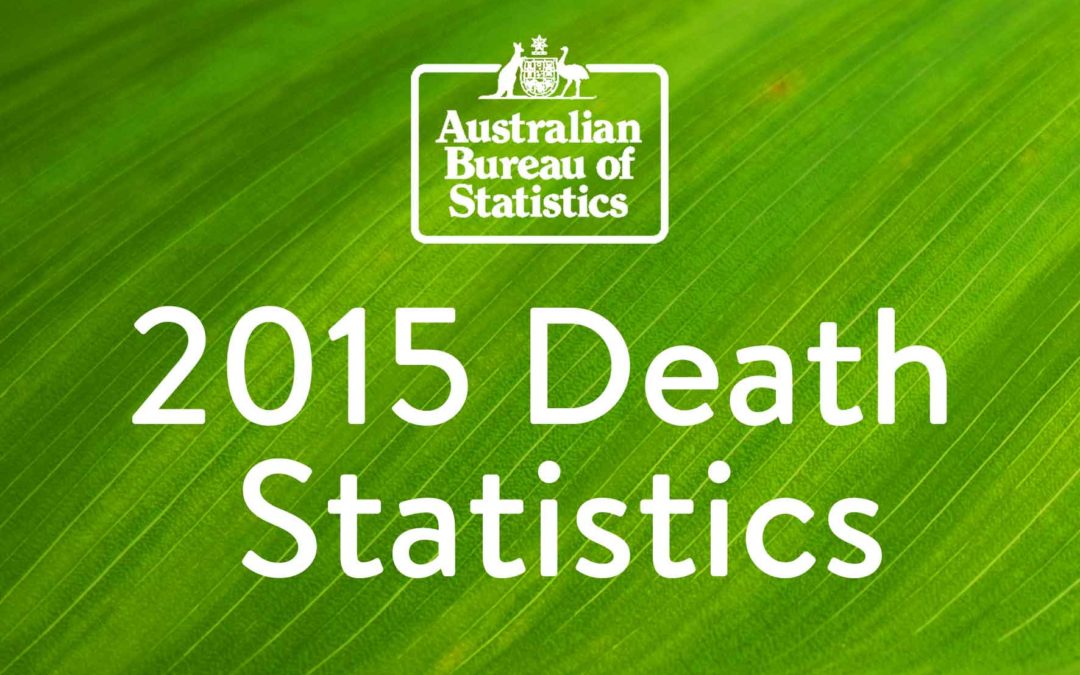In September, the Australian Bureau of Statistics released its death statistics for 2015. The ABS usually release these statistics in November each year, for the previous calendar years’ statistics, however, their data is available earlier this year. We present some of their key findings below.

Deaths 2015
There were 159,052 deaths registered in Australia in 2015, 5,472 more than the number registered in 2014 (153,580). Over three quarters (77.5%) of these deaths were to usual residents of New South Wales, Victoria and Queensland. Since 2005, the number of deaths registered has increased by around 1.9% per year on average for males and 2.0% per year for females, with year-to-year fluctuations (see graph 1.1).

Median age
In 2015, the median age at death was 78.7 years for males and 85.0 years for females. This was an increase of 0.2 years each for both males and females since 2014. Over the past 10 years, the median age at death has increased by 1.9 years for males and 2.1 years for females at the national level. In 2015, the highest median age at death for males was in Victoria (79.8 years) and for females in South Australia (85.7 years). The lowest medians were in the Northern Territory (63.1 years and 63.7 years respectively).
Crude death rates
In 2015, the crude death rate (CDR) in Australia rose to 6.7 deaths per 1,000 population, up from 6.5 in 2005. During 2005 to 2015, the CDRs has been relatively stable with the highest rate at 6.8 deaths per 1,000 population in 2008 and the lowest at 6.4 in 2013.
Standardised death rates
During 2005 to 2015, the standardised death rate (SDR) for Australia showed an overall decline, while experiencing some small fluctuations. SDRs remained unchanged at 5.5 deaths per 1,000 standard population in 2014 and 2015 but down from 6.1 in 2005. The SDRs for males and females also showed an overall decline during the period, again with some small fluctuations (see graph 1.3).

States and territories
In 2015, the Northern Territory had the highest SDR (8.0 deaths per 1,000 standard population). Tasmania recorded the second highest SDR (6.4). The Australian Capital Territory had the lowest SDR (4.8).
Over the past 10 years, SDRs declined in all states and territories. The Northern Territory and the Australian Capital Territory experienced the largest declines (falling by 1.3 and 0.9 deaths per 1,000 standard population respectively). These declines were followed by South Australia (falling 0.7), New South Wales, Victoria and Western Australia (each falling 0.6), and Queensland and Tasmania (each falling 0.5) (see graph 1.4).

For more information visit the Australian Bureau of Statistics website www.abs.gov.au. You can also download spreadsheets of the ABS’s 2015 death statistics from our Resources section on the website.

